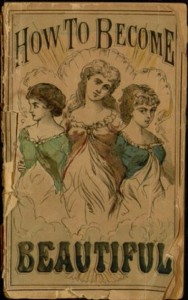The Printed Image: Illustrated Poems
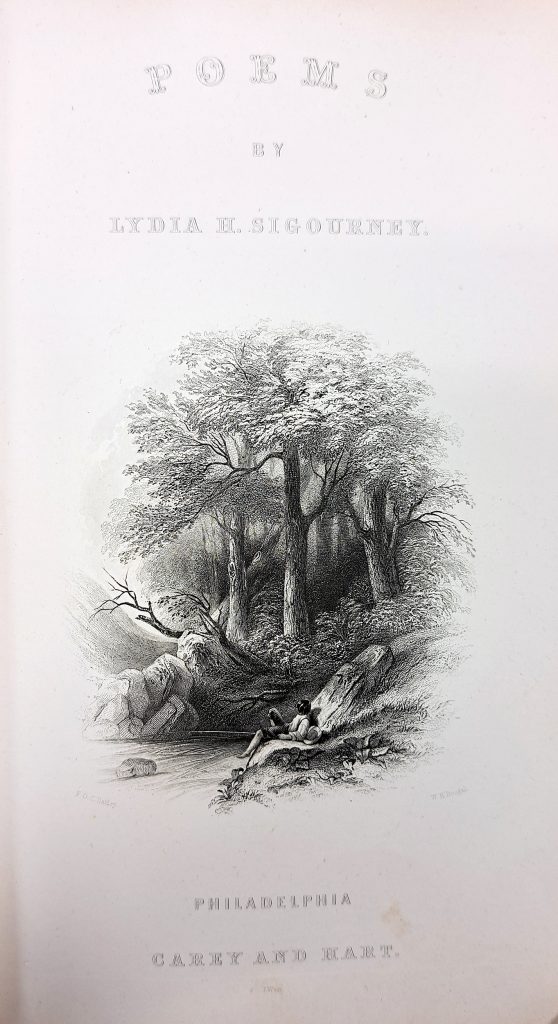
A Landscape
Designed by Felix O.C. Darley, engraved by William .H. Dougal.
This is Mike Sgier, a Distinctive Collections Coordinator here at Falvey Library, and today I’m debuting a new blog series titled The Printed Image, exploring illustrated and pictorial works from Falvey Library’s Distinctive Collections. For this inaugural post, I’m highlighting Illustrated Poems by Lydia Howard Sigourney, with illustrations designed by Felix O.C. Darley.
Published in 1849 by Philadelphia-based Carey and Hart, Illustrated Poems is a collection of over 100 of Sigourney’s poems, serving as a survey of her renowned career up to that the time. Darley, still in the early years of his illustration career, contributed 14 illustrations to the book. Shortly before publication, Darley would move from Philadelphia to New York where his career would continue to thrive, securing his status as a pioneer in American illustration.
Sigourney’s poems selected for this book refer to historical and biblical figures along with more everyday concerns in early 19th century American life. It is these more commonplace subjects that appear most frequently in Darley’s illustrations, a mixture of romanticized environments, portraits, and scenes of daily life.

The Western Emigrant
Designed by Felix O.C. Darley, engraved by William H. Dougal.
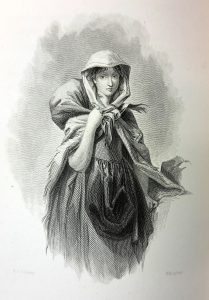
Erin’s Daughter
Designed by Felix O.C. Darley, engraved by William Humphrys.
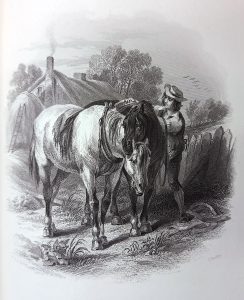
The Drooping Team
Designed by Felix O.C. Darley, engraved by James Smillie.
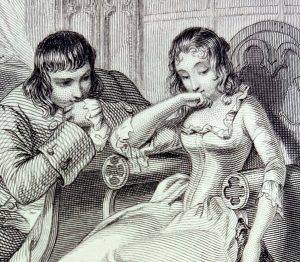
Detail from The Ancient Family Clock.
Designed by Felix O.C. Darley, engraved by William Humphrys.
Darley’s illustrations are tightly composed and highly detailed, with a clean and confident line. But these qualities must also be attributed to the engravers who played a critical role in the creation of these illustrations. While Darley is given top billing as a designer, each illustration is credited with its own engraver. The engraver would cut the designs into metal with a tool called a burin, and the carved lines would then hold ink during printing. This process accounts for the sharp lines and rich tones that appear throughout the illustrations.
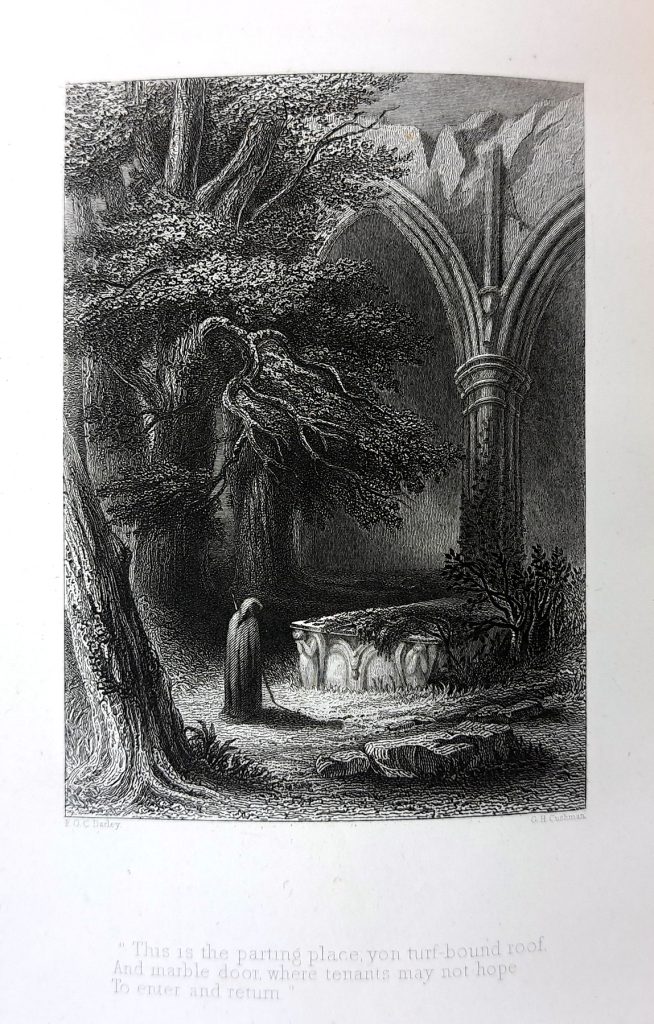
The Tomb
Designed by Felix O.C. Darley, engraved by George H. Cushman.
A frequent subject within Sigourney’s poems is death and mortality. This subject would account for one of the more unique illustrations in the book, titled The Tomb. While the illustration appears at first glance to be a landscape, a deeper mystery pervades the surroundings, with buttresses carved into stone and a marble tomb sinking into the ground, visited by a robed figure. These details complement the haunting tone of Sigourney’s poem, a mediation upon the solitary nature of death.
Illustrated Poems may be viewed in Falvey Library’s Rare Book Room during walk-in hours (Wednesdays 9:30-11:30am and Thursdays 2-4pm) or by appointment. The book may also be viewed online through the Falvey Library catalog or the Internet Archive.
Curious to know more about the engraving process? This blog post from the Metropolitan Museum of Art shows a step-by-step guide to this printmaking process.
Finally, to see more poetry selections from Distinctive Collections, please visit the new library exhibit Poetic License, which opens Monday, February 6 on Falvey Library’s first floor.


